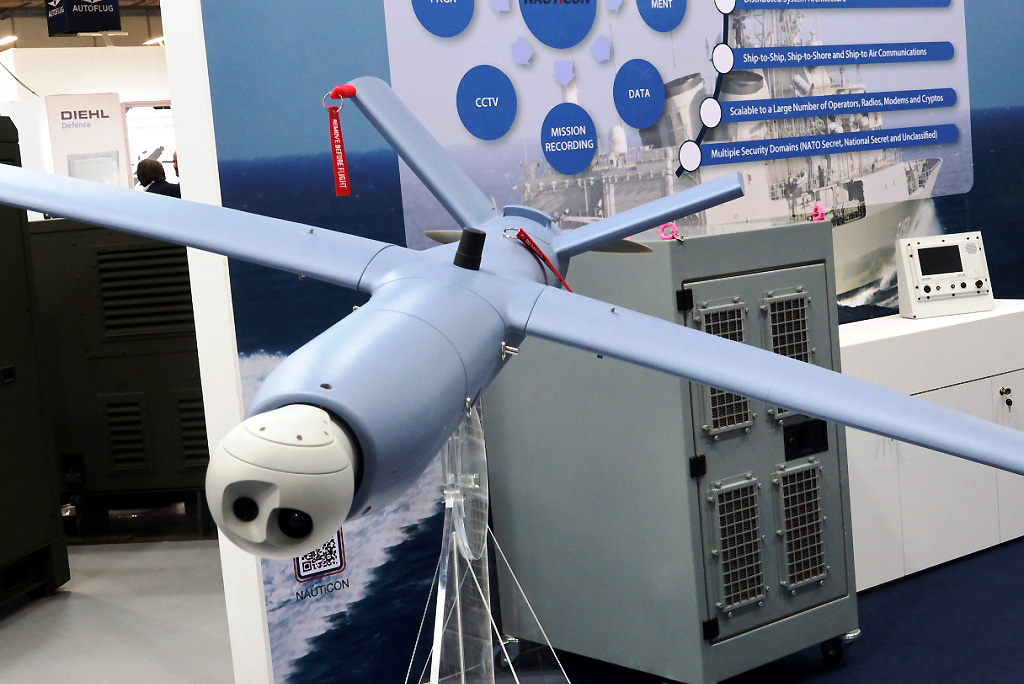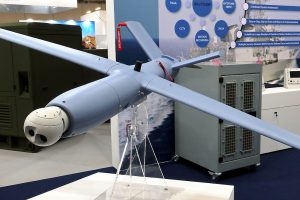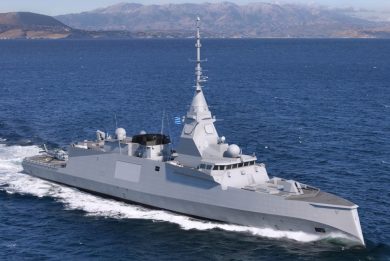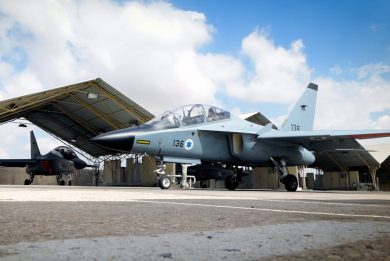
DEFEA 2023 – Attalus, a Greek Loitering Munition from Intracom Defense
The increased use of loitering munitions in the Russian-Ukrainian conflict is leading to a multiplication of proposals from industry. Greece is not immune to this “fashion” and at DEFEA Intracom Defense unveiled its loitering munition solution, named Attalus
The development of the Attalus, the loitering munition (LM) that could be seen in the IDE Intracom Defense booth at DEFEA, the defence exhibition that took place in Athens, Greece, May 9-12, started one year ago. A link to the conflict unwinding some thousands kilometres east is thus more than probable, although LMs had already started appearing on the battlefield in some previous conflicts.

The Attalus is 1.6 meters long and has a maximum take-off weight of 13.6 kg. It features a cylindrical fuselage; going from front to back we find the optronic gimbal with day and night sensors, provided by a French company, the warhead, which is provided by the Hellenic Defense System (HDS), the recovery parachute, the batteries as close as possible to the centre of gravity, the electronics bay, and the electric motor that activates the two-blade pushing propeller. The aerodynamic configuration is quite conventional, the Attalus featuring a high wing with a 2.3 meters span and a V-tail. To contain costs the warhead is taken from the HDS portfolio, and comes in the form of a 1.25 kg shaped charge capable to defeat 400 mm of rolled homogeneous armour. The safe and arming device is designed according to STANAG 4187 and is therefore capable to deactivate the warhead once it has been activated, allowing the recovery of the system should the operation be aborted, hence the presence of the recovery chute.

For take-off the Attalus uses a catapult, a jam-resistant encrypted data-link ensuring full man-in-the-loop capability following the launch. In fact it is more than that, as it can be considered a mobile ad hoc network; this allows Attalus munitions to talk between them and not only with the ground control station, in order to coordinate a swarm attack, while one Attalus can also play the role of radio-relay in order to extend the range of other similar munitions in flight. The Intracom Defense LM is fitted with an automated target recognition and tracking system based on artificial intelligence algorithms, AI being also involved in the swarm capability, with potential further evolutions.
The Attalus cruise speed is 85 km/h, the average endurance being 42 minutes, however EDR On-Line understood this being a pretty conservative figure. When diving on the target, typically an armoured vehicle, the munition can reach a top speed of 280 km/h, adding the kinetic effect to that f the shaped charge.
The declared operational range is 50 km, the limitation being mainly due to the data link range, but as previously said this limit can be overcome using one Attalus as radio-relay. Navigation is ensured by a GNSS/INS system, however the company does not exclude to evolve the navigation suite to improve the system capability in GPS-denied scenarios.
The wings of the Attalus can be removed and installed before flight to lower its footprint during transport. This also allows to pack a certain umber of them in a vehicle and Intracom Defense is already working on a mobile solution that sees 6-8 munitions loaded in racks on an M113 tracked armoured carrier; the operator workstation is in the front part of the vehicle, just behind the pilot, while munitions are carried in the back. A possible choice is to install the ramp on the vehicle roof, another option being to have it on the ground. Power would be provided by an auxiliary power unit to allow switching off the vehicle engine.
EDR On-Line understood that the Attalus operating envelope was discussed by the company with the Hellenic Ministry of Defence. Flight, performance and evaluation tests should be finalised by year-end. As for firing tests these are planned for 2024, however it is still unclear where these will take place. Fully ITAR-free, the Attalus should be available in late 2025.
Photo by P. Valpolini


